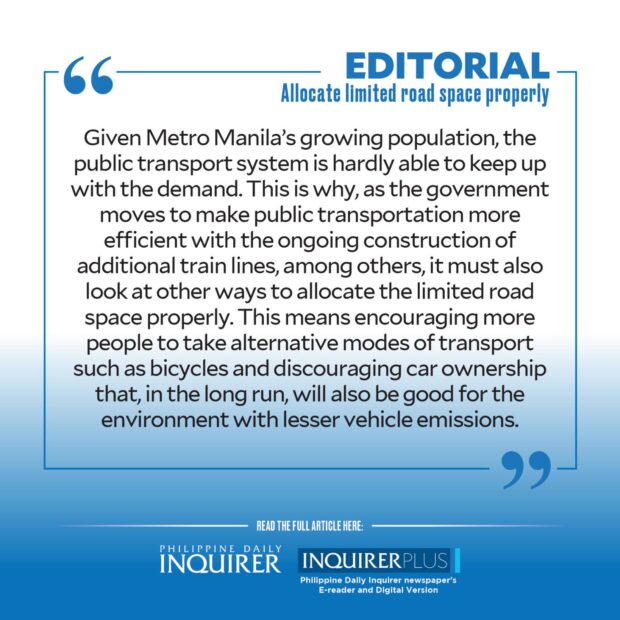Creating a more inclusive road network for bikers has been a challenging endeavor. One recent hurdle was the proposed construction of shared lanes for cyclists and motorists on Edsa, which was suspended by the Metropolitan Manila Development Authority (MMDA) after stakeholders insisted that these lanes should be exclusively for cyclists. It is evident from numerous accidents that mixing bicycles and motorcycles on these lanes only leads to more accidents. Therefore, it should be a simple decision to have dedicated lanes for cyclists.
However, there is still much work to be done in providing safe and inclusive streets for bikers. The pandemic has caused an increase in the number of cyclists due to limited public transportation, and the government has recognized the importance of active transportation by prioritizing the construction of safer lanes and wider sidewalks. The Philippine Development Plan (PDP) aims to build a 2,400-kilometer bike lane network nationwide by 2028, with already 564 km completed in Metro Manila, Metro Cebu, and Metro Davao as of June.
Unfortunately, progress has been slow. The government has reduced the budget for active transport infrastructure, undermining its commitment to prioritize pedestrians and cyclists. Furthermore, there is a lack of policy integration among local governments, resulting in insufficient infrastructure and the removal of existing bike lanes. The inconsistent actions of local officials, such as the announcement and subsequent cancellation of shared lanes in Makati and the removal of bollards in San Juan, highlight the need for cohesive and consistent policies.
Transforming the country’s roads into bicycle-friendly spaces, especially in messy urban areas like Metro Manila, is a complex task. Additionally, convincing car owners to use public transportation is challenging when the system itself is inefficient. The Department of Transportation has promised to improve the transportation system, but in its current state, it is a daily struggle for commuters who face long queues, crowded trains or buses, and traffic jams.
Cycling provides a viable alternative to avoid these inconveniences, as evidenced by the increasing number of households owning bicycles. However, better roads and infrastructure are needed to encourage more people to cycle. Mobility advocates have long advocated for a shift towards transportation solutions that prioritize moving people rather than cars, considering that only 20 percent of the population owns a car.
As the government works on improving the public transportation system, it must also consider allocating road space properly. This means encouraging alternative modes of transport like bicycles and discouraging car ownership, which will ultimately benefit the environment by reducing vehicle emissions. Policies implemented in Metro Manila can serve as a model for the rest of the country, but they must prioritize the safety and convenience of all commuters, including those who rely on trains, buses, jeeps, and bicycles.
Denial of responsibility! VigourTimes is an automatic aggregator of Global media. In each content, the hyperlink to the primary source is specified. All trademarks belong to their rightful owners, and all materials to their authors. For any complaint, please reach us at – [email protected]. We will take necessary action within 24 hours.


